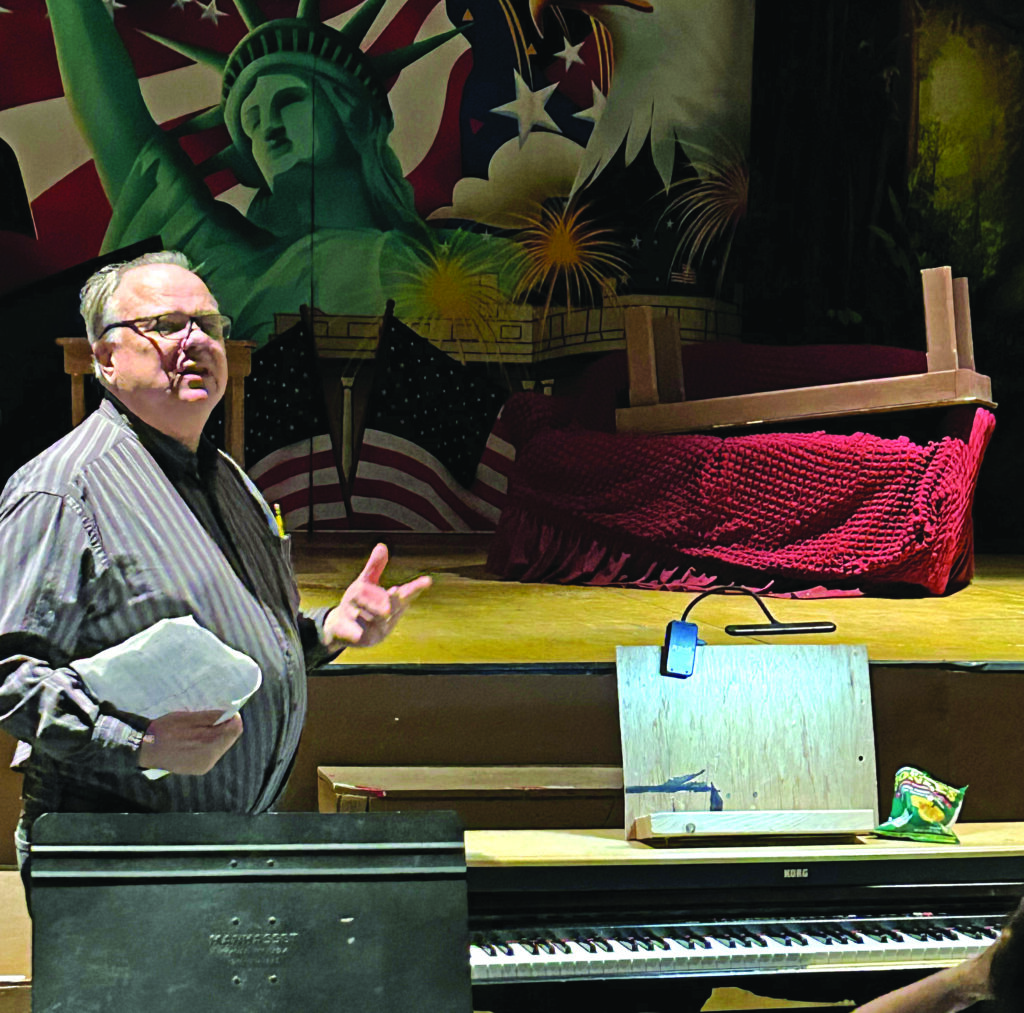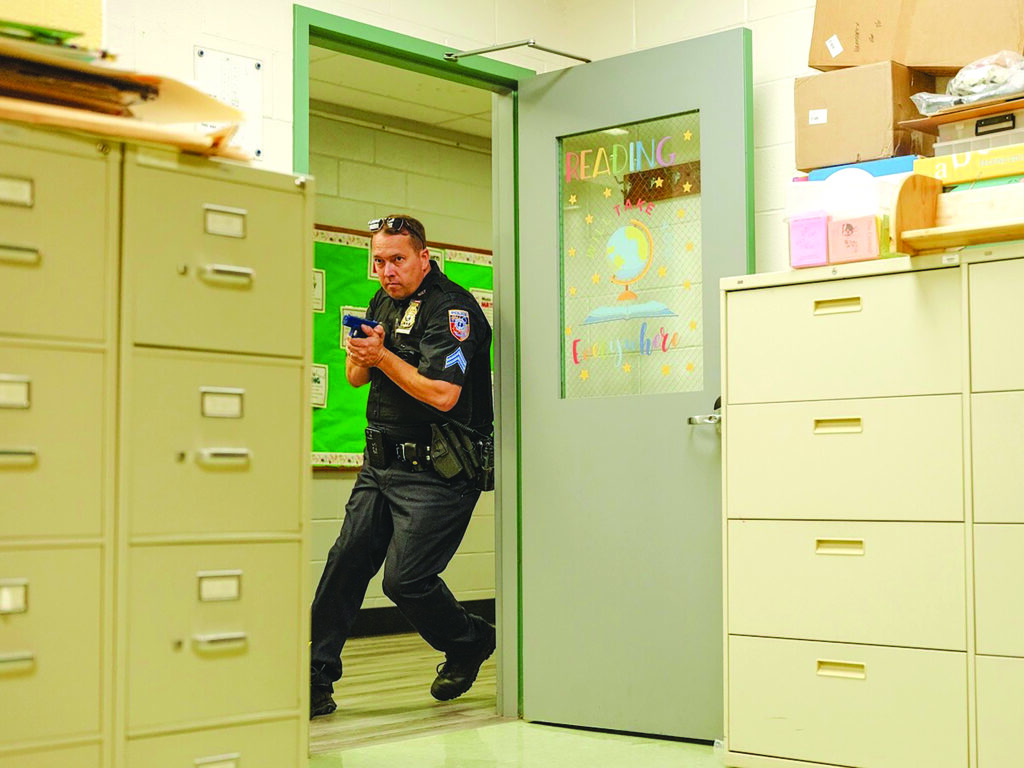Area districts react to Gov. Hochul’s school cellphone ban: Shelter Island out front on the issue

Gov. Kathy Hochul (D0 announced her plan to have “distraction-free” schools as part of the 2026 fiscal year executive budget recently. The policy outlines restricted use of smartphones and other internet-enabled devices on school grounds during school hours to reduce distractions in schools.
The executive budget provides $13.5 million to aid in the implementation of this proposal for pouches, cubbies or other necessary infrastructure.
More than 70% of teachers throughout the country say that cellphones pose a “major distraction” for students in the classroom, according to a Pew Research Center study.
“We’re not developing the skills we need because kids are distracted with the cellphones,” Ms. Hochul said at a press conference Tuesday. She said teachers are competing with “viral dances … messages from their friends, sometimes threats [and] bullying” for students’ attention during class.
Students, parents, teachers, administrators, advocates and local leaders met with Ms. Hochul to “devise a solution” to the “complicated challenge” that smartphones pose in schools. The policy, to be implemented by the start of the next school year, will require students to disconnect from their devices throughout the school day — including class time, at lunch and in the hallways.
Schools will have flexibility in implementing the policy next school year, she explained. Districts will have say over how they store the devices and how they will ensure compliance.
Students who need devices for medical reasons, students who speak English as a second language and students with learning disabilities will be exceptions for the policy.
In September 2024, the Shelter Island School district codified a ban on cellphone use during instructional classes. The Island was among the first in the region to ban use in one class at the request of social studies teacher Peter Miedema.
A couple of years ago, he banned them in his classroom and students complied, but some weren’t pleased by the ban. Ultimately, more teachers expressed interest in joining Mr. Miedema in implementing bans and now a formal policy exists banning all cellphone use for students in kindergarten through grade five.
Students in upper grades aren’t allowed to use their cellphones in classes unless they are given explicit directions to use them for instructional purposes. Otherwise, they must turn in their phones at the start of a class and retrieve them when the class ends. They may use them passing from class to class and in the cafeteria during their lunch periods. But no pictures and recordings can be made without the permission of all involved.
Failure to follow the policy will initially result in a warning to the student. A second offense will result in notification to parents. From there, infractions can result in confiscating of the phone to be returned to the student or parent at the end of the day.
Ongoing use when banned will result in a student being banned from bringing a cellphone to school and could result in added penalties, including detention, suspension or expulsion from school.
Mattituck-Cutchogue Union Free School District superintendent Shawn Petretti believes the concept of a cellphone ban by the governor is “well intended” and that detaching students from cellphones during school hours creates a “productive and safe learning environment.” He feels that policy regarding the implementation of such a ban should be discussed at the local level.
“I think local boards of education should be the ones designing and implementing policies for their districts,” Mr. Petretti said.
The district implemented its own policy regarding the use of personal devices this year. At the elementary school level, students with personal devices should have them turned off and out of sight. At the junior high, students are not allowed to have phones out at any point during the school day. High school students can have phones throughout the day, but when they walk into a classroom, they are put in a designated spot for the duration of the class period.
Mr. Petretti said that the policy has been well received by the school community. “Students do appreciate the ability to disconnect from their phones and focus on their academics during school time,” he said.
While the current policy in the district has received positive feedback, Mr. Petretti said he doesn’t “necessarily agree with a full ban where the secondary students would have to surrender their phones for the full day.”
In Greenport Union Free School District, students are allowed to have cellphones in school, with use allowed at teachers’ discretion. To minimize distractions, phones are required to be put away during class time unless permitted by the teacher.
Interim superintendent Ryan Case added that the district recognizes the importance of communication between parents and their children, particularly in emergency situations.
“If the state issues a directive requiring changes to cell phone policies, we will review the guidance and implement a new policy accordingly while maintaining a focus on our students’ learning environment,” Mr. Case said.
Southold Union Free School District superintendent Anthony Mauro said the district is still reviewing the first draft of the state budget including the device-free schools proposal. He said the district will plan to carry out any new initiative once the final version of the state budget is released and requirements are outlined.
“There is certainly merit to unplugging during the school day, but I also feel there is merit to teaching students how to appropriately utilize technology since it is such a big part of their lives,” Mr. Mauro noted. “Balance is the key to successfully integrating technology into our lives.”
In Oysterponds Union Free School District, superintendent Justin Cobis said the board of education has not had a policy regarding cellphone bans in its kindergarten through sixth grade classrooms, as phones never posed an issue there.
“I always air on the side of local control, and I always would air on the side of local districts deciding what is best for their constituents,” Mr. Cobis said. “That being said, we would always move forward and be in compliance with state compliances issues such as this.”
In Riverhead Central School District, teachers and administrators are authorized to confiscate student cell phones that are being used in violation of the code of conduct. Teachers and administrators can request that phones not be permitted in class during the school day.
In a comment sent to Times Review, the district said it is in the process of revising its code of conduct to incorporate verbiage that will align with the governor’s proposed policy.
Students at Shoreham-Wading River High School must check in their personal devices when they enter each classroom to be retrieved after class. High school students are allowed to access their phones when they are not in an instructional period.
For students in kindergarten through fifth grade, Shoreham-Wading River Central School District prohibits personal devices from being brought to school. For grades 6-8, any personal devices that are brought to school must be stored in student lockers during school hours.
The current policy is one the district said was developed in collaboration with family, students and staff. Superintendent Gerard Poole said the policy “has successfully enhanced student engagement while reducing classroom distractions.”
“As New York State considers device-free legislation, our district hopes that the final policy will preserve local decision-making authority and continue to allow meaningful parent involvement in developing these plans,” Mr. Poole said.









